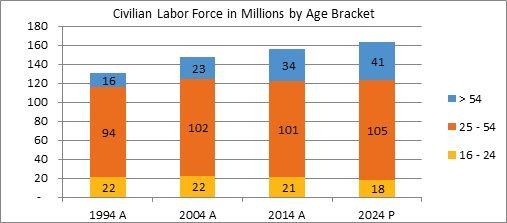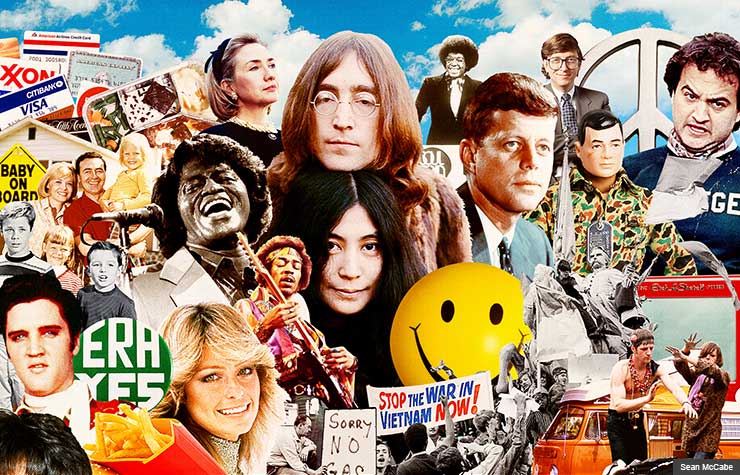
This graph displays data from the U.S. Bureau of Labor Statistics showing the growing number of older workers in the workforce as of 11/8/15.
According the EEOC, this is the first time in US history when four generations – pre-boomer, boomers, Generation X and millennials – are engaged in the workforce at the same time. In 1991 only 1 in 10 workers planned to stay in the work force beyond age 65. Today the number has risen to almost 4 in 10. Older workers are becoming increasingly important to the workforce, so responses we posted from older workers in our recent blog “Older, Wiser, Unemployed” are still on our minds:
“As a Baby Boomer, I’d love to work in the healthcare market longer. However I don’t see much recruiting by ANY company for those over 50.”
“Companies in general have not done much to retain baby-boomer talent.”
These older workers will play a significant part in solving challenges related to the impending talent shortage… So, why aren’t they feeling the love? Consider some of the benefits of hiring older workers. Experts give lots of reasons why employers should hire older workers; including the depth and breadth of their experience and knowledge, their work ethic, their loyalty and low turn-over rates. Baby Boomers and the talent shortage are two sides of an inevitable coin. We think the following study on worker engagement is especially compelling when it comes to the effect older workers could have on your company’s bottom line.
The Society for Human Resource Management shared an article regarding older workers and cited a study by AARP. The study found that 65% of workers age 55 and older are considered “engaged,” while between 58% and 60% of younger workers are. Though this may not seem significant, the following quote explains just how important that small increase could be.
“Although the generational differences in engagement might not seem large, it takes only a 5% increase in engagement to achieve 3% incremental revenue growth,” the press release stated. “That translates into a large company with $5 billion in revenue achieving a $150 million revenue increase as a result of even a 5% engagement improvement.”

“The majority of [these] workers are interested in training opportunities to stay abreast of technological advances and do not feel that they have trouble keeping up with the new technology needed for their job,” the press release said.
If achieving growth is on your mind, don’t overlook Baby Boomer potential. Start singing, “Baby Come Back!”
About Talencio: We help the Health Technology community make progress by putting the right people in the right place to solve problems and identify opportunities to move humanity forward. To learn more about opportunities in the health technology field, or to hear how other companies have partnered with Talencio to tap into our skilled professional talent pool, contact us at 612.703.4236 or email. Talencio has been the preferred provider of vetted, accomplished professionals to the Health Technology Community for over 9 years.
